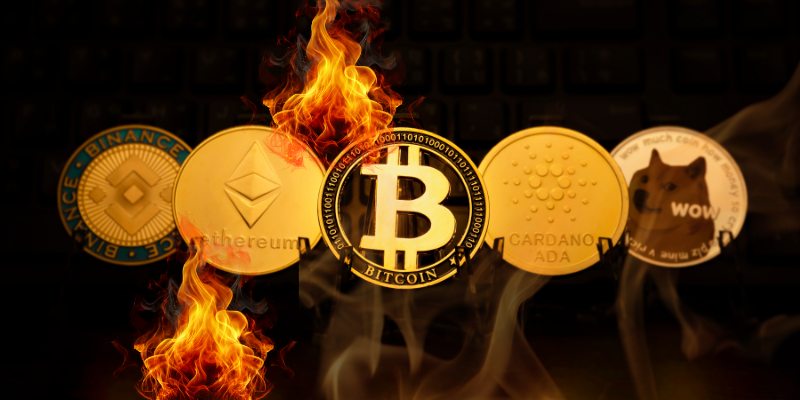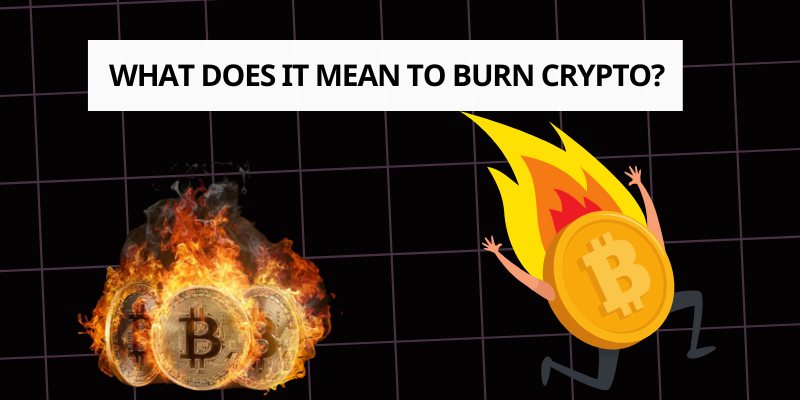What does it mean to Burn Crypto?
In the fast-evolving world of cryptocurrency, the term “burn crypto” has become a buzzword among investors, developers, and blockchain enthusiasts. From Binance’s quarterly token burns to Ethereum’s deflationary mechanism, burning crypto is a strategic practice that shapes token economics and influences market dynamics. But what does it mean to burn crypto, and why are leading blockchain projects adopting this approach? This article explores the mechanics, purposes, and impacts of crypto burning, shedding light on its role in the digital asset ecosystem.
Contents
What does it mean to Burn Crypto?
To burn crypto means to permanently remove a portion of a cryptocurrency’s tokens or coins from circulation, reducing the total supply. This is typically achieved by sending tokens to a “burn address”—a wallet with no accessible private key, ensuring the tokens are locked away forever. The process is transparent, recorded on the blockchain, and verifiable through explorers like Etherscan or Solscan. Unlike physical destruction, burning crypto is a digital act, but its economic implications are profound.
For example, if a project burns 1 million tokens out of a 10 million supply, the circulating supply drops to 9 million, potentially increasing scarcity and value if demand holds steady. Major cryptocurrencies like Binance Coin (BNB), Ethereum (ETH), and Solana (SOL) have embraced burning to manage supply, control inflation, and boost investor confidence.

How Does Burning Crypto Work?
The process of burning crypto is straightforward but varies by blockchain. Typically, a project team or protocol selects tokens to burn—whether a fixed amount, transaction fees, or profits from operations. These tokens are sent to a burn address, often labeled with null identifiers like 0x000…000. Once the transaction is confirmed, the tokens are removed from circulation, and the reduced supply is reflected on the blockchain.
Some burns are manual, such as Binance’s quarterly BNB burns, while others are automated, like Ethereum’s EIP-1559 mechanism, which burns a portion of transaction fees. Solana, for instance, burns transaction fees to maintain network efficiency. Smart contracts can also facilitate burns, automatically destroying tokens based on predefined rules, ensuring consistency and transparency.
Why Burn Crypto?
Projects burn crypto for several strategic reasons, each tied to economic or operational goals:
Increasing Scarcity: Reducing supply can enhance token value by creating scarcity, assuming demand remains stable. Binance’s BNB burns, targeting a 100 million token supply, have removed over 50% of its initial 200 million tokens by 2025, driving value appreciation.
Controlling Inflation: Burning offsets inflationary mechanisms like staking rewards or mining. Ethereum’s fee burns, introduced in 2021, have removed over 4 million ETH by April 2025, making ETH deflationary during high network activity.
Boosting Confidence: Burns signal a project’s commitment to long-term value, attracting investors. Shiba Inu (SHIB) burns trillions of tokens through community events, rallying its user base.
Correcting Supply Issues: Burns can address over-issuance or transparency concerns. Solana faced scrutiny in a 2022 lawsuit for failing to burn 8 million SOL as promised, highlighting the need for clear communication.
Notable Examples in 2025
Several high-profile projects illustrate the impact of burning crypto:
Binance Coin (BNB): Binance’s quarterly buyback-and-burn program uses 20% of profits to purchase and burn BNB, reducing supply and supporting price stability. In 2025, BNB’s burns continue to drive its market resilience.
Ethereum (ETH): Since EIP-1559, Ethereum burns base fees from transactions, with billions of dollars’ worth of ETH removed. This has positioned ETH as a deflationary asset, appealing to institutional investors.
Solana (SOL): Solana burns transaction fees to optimize its high-throughput blockchain. However, a 2022 lawsuit alleged Solana Labs misled investors by not burning 8 million SOL, underscoring transparency challenges.
Shiba Inu (SHIB): SHIB’s community-driven burns aim to reduce its quadrillion-token supply, though the massive scale limits immediate price impact.

Implications and Risks
Burning crypto can enhance token value and ecosystem stability, but it’s not without risks. Successful burns, like Ethereum’s, have bolstered market confidence, with ETH’s deflationary trend driving adoption. However, overhyped burns, as seen with some meme coins, can disappoint investors if price gains don’t materialize. Transparency is critical—Solana’s legal troubles highlight how unfulfilled burn promises can erode trust.
Market manipulation is another concern. Critics argue that burns timed with market pumps can artificially inflate prices, requiring projects to prioritize clear communication. Additionally, burns alone cannot sustain a project’s success; utility, adoption, and innovation remain essential.
Looking Ahead
As the cryptocurrency market matures, burning crypto remains a powerful tool for managing token economics. In 2025, projects like Binance, Ethereum, and Solana continue to leverage burns to balance supply, incentivize holders, and maintain network efficiency. For investors, understanding the mechanics and intent behind burns is crucial for navigating market volatility.
While burning crypto can drive value and confidence, its success hinges on transparency, execution, and broader ecosystem growth. As blockchain technology evolves, the practice of burning crypto will likely remain a cornerstone of digital asset strategy, shaping the future of decentralized finance.